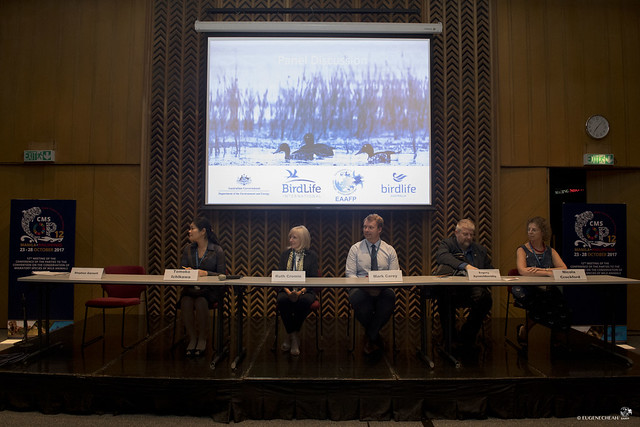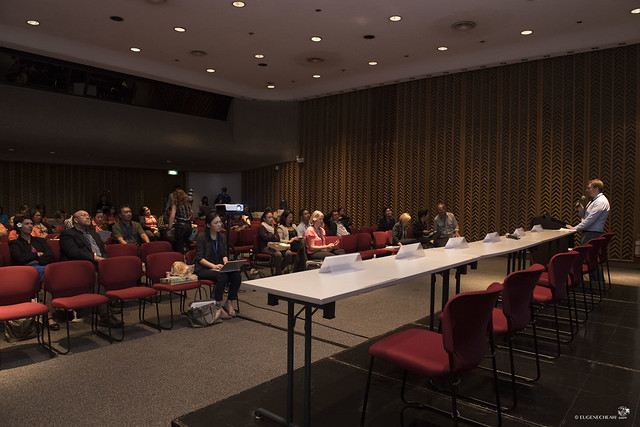Connie Warren
At the 12th Meeting of the Parties to the Convention on Migratory Species (CMS COP12) in Manila in October, the EAAFP, the Government of Australia, BirdLife International and BirdLife Australia hosted a side event to showcase the International Single Species Action Plans for Baer’s Pochard and Far Eastern Curlew that were up for adoption at COP12.

Opening of the Side Event © Eugene Cheah/EAAFP
These action plans were developed by the EAAFP’s Baer’s Pochard and Far Eastern Curlew Task Forces. The Action Plan for Baer’s Pochard was endorsed at MOP8 in 2015, and the Far Eastern Curlew Action Plan at MOP9 in 2017. Both species are also listed under Appendix I under CMS; the highest level or protection under the Convention.
Tomoko Ichikawa (Communications Officer, EAAFP) opened the event by sharing some of the successes of other SSAPs for migratory waterbirds in the EAAF, drawing on examples from the action plans for Spoon-billed Sandpiper, Black-faced Spoonbill, Chinese Crested Tern and Siberian Crane. Ruth Cromie from Wildfowl & Wetlands Trust gave an overview of the conservation status and activities that have been undertaken by the Baer’s Pochard Task Force since the SSAP was endorsed in 2015. Dr. Mark Carey, the Chair of the Far Eastern Curlew Task Force then followed with an overview of the SSAP for Far Eastern Curlew that was finalised in January 2017 at MOP9.

Tomoko Ichikawa representing East Asian-Australasian Flyway © Eugene Cheah/EAAFP
Presentations were followed by a panel discussion with presenters, along with Nicola Crockford (RSPB) and Evgeny Syroechkovskiy (Chair, Spoon-billed Sandpiper Task Force) about the value of Single Species Action Plans. The panel agreed that SSAPs have clearly demonstrated their value in migratory waterbird conservation and that the implementation of these plans often have conservation benefits to a much wider suite of species. Single Species Action Plans are also a great framework for including a comprehensive list of stakeholders in international species conservation efforts, including Range States, NGOs and researchers.

Discussion Session with Tomoko Ichikawa, Ruth Cromie, Mark Carey, Evgeny Syroechkovskiy and Nicola Crockford © Eugene Cheah/EAAFP
The Baer’s Pochard and Far Eastern Curlew Task Forces are happy to report that both action plans were adopted by consensus at COP12. The Task Forces look forward to collaborating with CMS parties to implement these plans.





